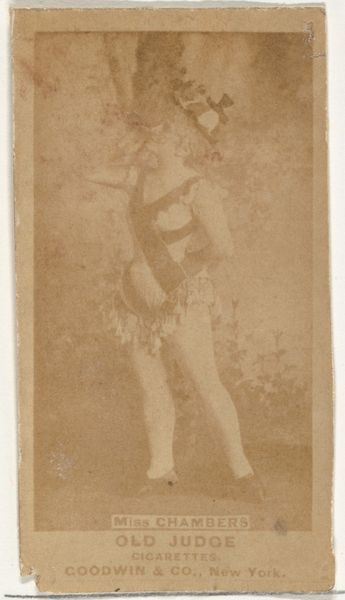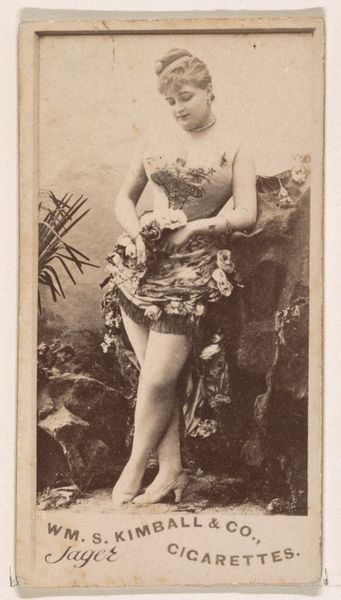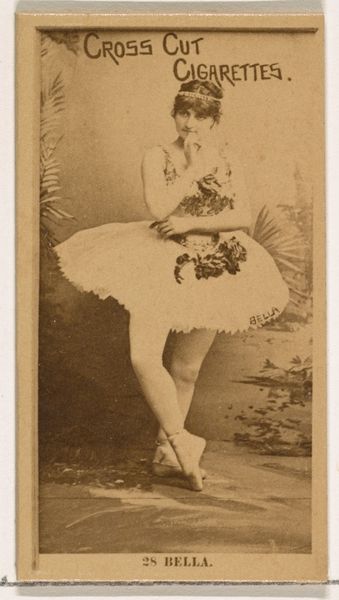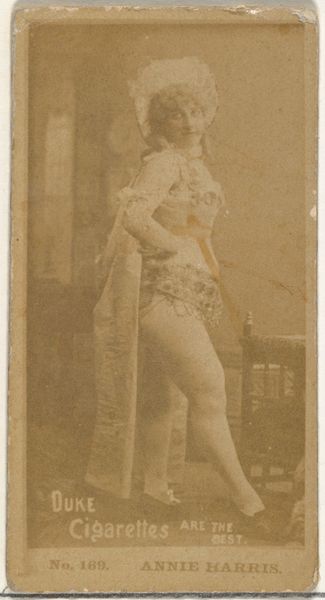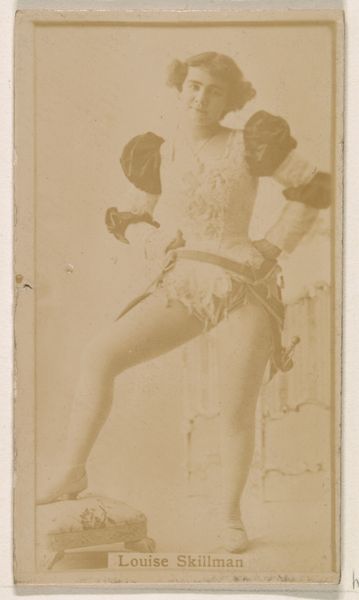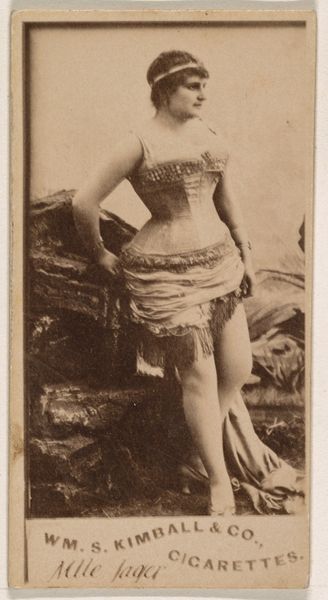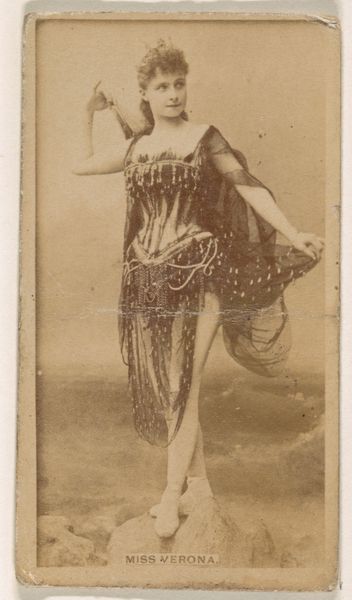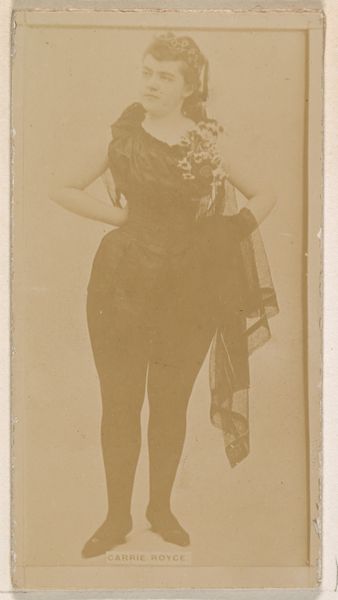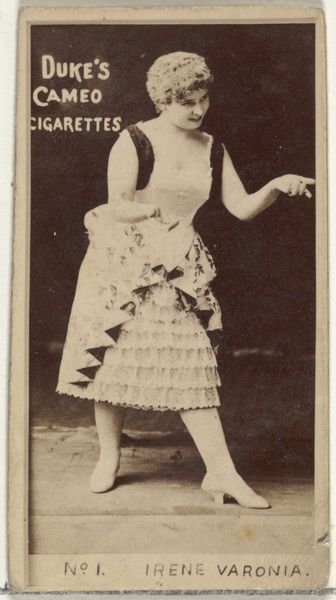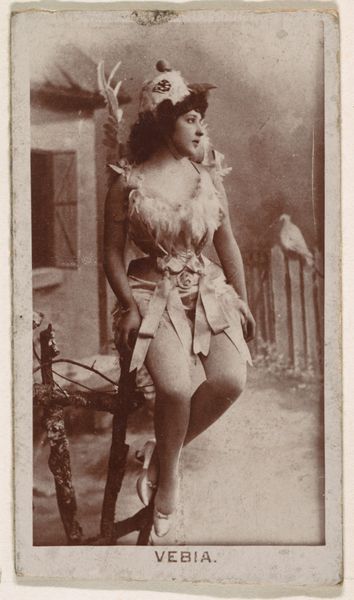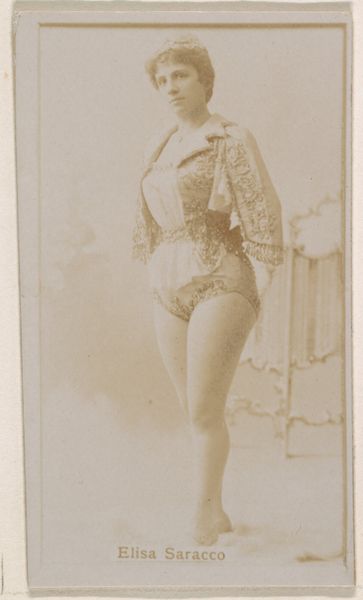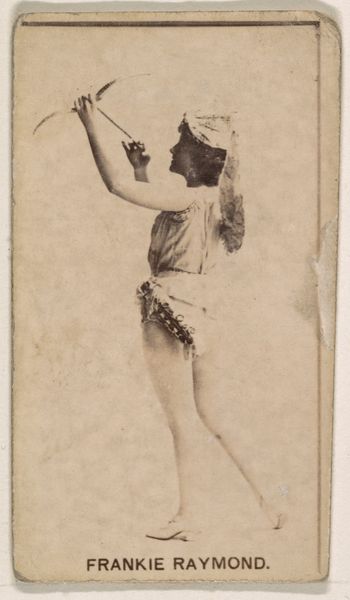
Marie Tempest, from the Actresses series (N245) issued by Kinney Brothers to promote Sweet Caporal Cigarettes 1890
0:00
0:00
print, photography
#
portrait
# print
#
photography
#
nude
Dimensions: Sheet: 2 1/2 × 1 7/16 in. (6.4 × 3.7 cm)
Copyright: Public Domain
Editor: This is "Marie Tempest," a photograph printed around 1890 by the Kinney Brothers, part of their "Actresses" series promoting Sweet Caporal Cigarettes. It’s intriguing how theatrical and… well, a bit risqué it feels for what is essentially an advertisement. What does this image tell us about the public's perception of actresses at that time, and the relationship between art and commercialism? Curator: It's fascinating, isn’t it? Consider the context: mass production through photography democratized portraiture, but here it's deployed within a highly gendered commercial framework. Cigarette cards like these weren't just collectibles; they were cultural currency, circulating images of idealized femininity linked to leisure and consumption. Notice the stage costume. How does it function here? Editor: It makes her look both powerful and alluring… almost like a fantasy figure. Is it intended to empower the female consumer, or is she just meant to be another commodity herself? Curator: Exactly. This image exists in a liminal space. It attempts to capitalize on the burgeoning cult of celebrity while simultaneously reinforcing certain socio-political ideals regarding women and performance. It reflects the expanding commercial culture where advertising was becoming increasingly intertwined with identity and aspiration, for better or for worse. What do you think its lasting impact has been? Editor: It's made me realize how much of our contemporary visual culture, especially in advertising, still relies on those early connections between image, desire, and social status. The strategies may be more sophisticated now, but the core principle seems very much the same. Curator: Precisely. It highlights the enduring power of images in shaping not just our consumer choices but also our perceptions of ourselves and the world around us, a trend that really solidified during the late 19th century. It gives us lots to think about in our current times, too.
Comments
No comments
Be the first to comment and join the conversation on the ultimate creative platform.
